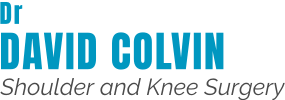- Dr David Colvin
Official Disability Guidelines
official disability guidelines
If you are involved in workers’ compensation, you need to know about ODG – The Official Disability Guidelines.
“Big Data“ is the buzz word at the moment. For me it all sounds a bit too much like Big Brother – someone is using my personal information for who knows what. But it is not all bad. Big data has allowed a much closer look at injury management, recovery times, and validated treatments. The Official Disability Guidelines (ODG) is one such subscription service. It collates data on literally millions of work injuries in the US, and now Australia.
I’ve been discussing ODG with Shane Taranto from Star Injury Management.
 David: What is ODG?
David: What is ODG?
Shane: The ‘Official Disability Guidelines’ or ODG is a comprehensive data base which assists with benchmarking recovery timeframes for injuries.
It provides timeframes for return to work and recovery, best practice treatment recommendations, and recommendations for restrictions based on the injury.
David: What are the practical uses for ODG?
Shane: ODG can assist with starting the conversation with key stakeholders and setting expectations in the early stages of the recovery process.
It can be extremely helpful for Employers managing internal return to work programs with minimal exposure to injury recovery timeframes and in understanding the type of ‘suitable’ duties that need to be accommodated.
It also assists treating doctors and surgeons to reinforce expectations based on their clinical knowledge of an injury recovery timeframe.
The database has 3 sets of timeframes:
- ‘Best Practice’ which takes into account the physiological recovery of an injury excluding any ‘life’ issues which commonly delay recovery in the real world
- ‘Average’ which considers the typical return to pre-injury capacity. It also allows adjusted timeframes for ‘confounding factors’ which can include smoking, obesity or legal representation; these commonly result in delayed recovery timeframes; and
- ‘Maximum’ which considers the maximum anticipated timeframe for return to pre-injury capacity, generally due to multiple complexities / barriers in recovery.
STAR IMS uses these ‘population’ recovery timeframes to set expectations with the Injured Worker and the Employer when developing Graduated Return to Work Programs and discussing progression timeframes with the Nominated Treating Doctor. ODG data can also assist in identifying potential gaps in access to ‘best practice’ treatment and provide further justification for treatment approvals if needed.
David: How can this work with injury management?
Shane: A 30 year old Diamond Driller underwent a Rotator Cuff Repair for his right shoulder. In collaboration with the surgeon’s feedback the timeframes for ODG return to work were utilised to assist with managing the injured work’s expectations of recovery as well as the workplace and insurance company.
Initial return to work discussions for sedentary office duties were reviewed in line with the injury specific restrictions recommended and expected timeframes advised by ODG and the surgeon. This assisted in setting the expectations for recovery and work participation. The ODG timeframes assisted in backing up the knowledge and experience of the STAR case manager and treating surgeon to ensure all parties remained on the same page for the recovery and return to work process.
A graded return to work on restrictions post surgery in line with ODG and the surgeon’s recommendations allowed for a transition back to the original duties and unrestricted site based duties within the average predicted timeframe set by ODG.
 David: But not everyone is the same?
David: But not everyone is the same?
Shane: While ODG has a vast body of collated data, there are still a number of gaps which are continuously being improved.
The current core areas ODG struggles to capture (based on our experience to date) include:
Comorbid conditions
- If an injured worker has two or more injury sites, the data struggles to accurately estimate recovery timeframes as it’s unable to take into account the impact of each injury on the other.
- For example, if an exercise program is recommended for developing strength for a lower back injury, however is contra-indicated for a concurrent leg fracture where rest is required, this can delay the treatment and healing required for the back injury, resulting in extended timeframes for recovery overall
Bilateral conditions
- If an injured worker happens to have concurrent bilateral injuries, particularly if they’re at different stages in recovery,
- For example if an injured worker has two rotator cuff tears, the data can only predict recovery of one shoulder injury at a time.
Delayed Intervention
Sometimes, particularly in workers compensation claims, referral for the right intervention (treatment and return to work) are very delayed. So specialist and rehabilitation providers are receiving referrals well past the suggested timeframes for recovery, resulting in the data being irrelevant in ‘real world’ management.
David: Where do you see this going in the future?
Shane: Difficulties aside, ODG is showing signs it can assist in setting early intervention expectations for recovery and treatment. The data base for treatment is beginning to be utilised by some of the larger insurance groups to assist with streamlining approvals. Where an injury has a clear best practice treatment or investigation for diagnosis, insurers are looking at automated approvals to avoid delays in intervention, subsequently supporting the recovery process.
As the data base provides guidelines for recovery, treatment and restrictions it can be helpful for smaller workplaces to manage acute injury and return to work programs which don’t require complex management best facilitated by Workplace Rehabilitation Providers. This is likely to have a positive effective on Insurance Premiums for smaller businesses.
Overall, ODG is likely to be useful in providing guidance for an Injured Worker’s recovery following a workplace injury. As the data base continues to grow, the ability to provide direction on complex injuries / situations will also improve.
David: Thank you, Shane. One area where I already see ODG being invaluable in my own practice is early identification of patients who will not be able to return to their pre-injury occupation. ODG will give you some hard data on the prospect of a 62-year-old diabetic with a rotator cuff tear returning to work as a heavy-duty diesel mechanic. The patient and the insurer all benefit from early vocational redirection if there is very little prospect (statistically) of that patient returning to their usual job. And, as you say, the reliability of that information will only increase as the database grows.
